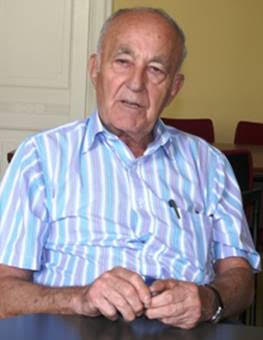
THE VOICE OF INTERNATIONAL LITHUANIA
|
VilNews has its own Google archive! Type a word in the above search box to find any article.
You can also follow us on Facebook. We have two different pages. Click to open and join.
|
Author Archive
Lithuania warns NATO of Russian missile threat
- Posted by - (0) Comment
![]()
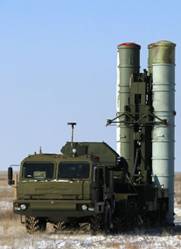
A Russian newspaper reported in April that the military has begun deploying S-400 mobile surface-to-air missiles in Kaliningrad, the Baltic exclave bordered by Poland and Lithuania.
Lithuanian President Dalia Grybauskaite has urged NATO to strengthen its military deterrence potential in the face of Russia’s intensified militarization in Kaliningrad.
The European missile shield is largely considered as part of the global American anti-ballistic missile system. Russia previously suggested that a joint anti-missile defense system be created on a territorial principle of shared responsibility. The offer was dismissed by NATO who also refused to give Moscow any legal guarantees that it won’t be targeted, forcing Russia to deploy a new radar system in Kaliningrad. Russia also warned it would relocate Iskander missiles to its westernmost region.
Addressing the NATO summit in Chicago, Dalia Grybauskaite said that, according to the Lisbon agreement, Russia was to cooperate with NATO on principles of mutual trust, transparency and predictability, which it allegedly violated by deploying surface-to-air and surface-to-surface missiles in Kaliningrad.
She stressed that the abovementioned missiles could reach Vilnius, Riga, Tallinn, Warsaw, Berlin and other NATO capitals, urging the alliance to create a stronger deterrence mechanism and show more flexibility at joint military drills. She also cautioned the allies of passing military know-how technologies or equipment to third parties.
- Bookmark :
- Digg
- del.icio.us
- Stumbleupon
- Redit it
- Posted by - (0) Comment
Send President Smetona’s remains back to Lithuania
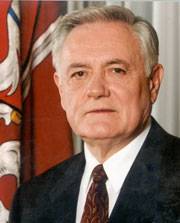
President Valdas Adamkus
In our today’s interview with former President Valdas Adamkus, he says:
"Send the remains back to his home country: It is sad to see that Smetona's family seems to have ended up in an internal conflict instead of thinking about what an important man he was for Lithuania. There is absolutely no reason to doubt Lithuania's safe anchorage in freedom and democracy nowadays and therefore this is not a reason not to provide a dignified burial for Smetona in his beloved homeland."
Adamkus adds that there also are many who believe Smetona was an autocratic president who does not deserve to be honoured by his home country, something he strongly disagrees with. "We must remember that such was the political situation in much of Europe throughout the interwar period. Also our neighbouring countries were led by autocrats, and it is my clear opinion, in such a perspective, that Smetona was a very good president who deserves all possible recognition for his tremendous efforts as a statesman of the highest rank," he says.
- Bookmark :
- Digg
- del.icio.us
- Stumbleupon
- Redit it
No flowers for Smetona
- Posted by - (0) Comment
![]()

Frank Passic
Ohio crypt holds remains of first Lithuanian President, yet he has been forgotten here in a Mausoleum tucked away in a Catholic Cemetery east of Cleveland, USA.
There are no flowers at his crypt, although the Mausoleum is filled with them on the vaults of others nearby. He was the President, yet you would not know that by reading the simple inscription found upon his nameplate. His image was on a coin, a banknote, various stamps and medals. Yet he has been forgotten here in a Mausoleum tucked away in a Catholic Cemetery east of Cleveland, Ohio, USA.
Frank Passic
Albion, Michigan
To read the article CLICK HERE
Below: Comments to the article
- Bookmark :
- Digg
- del.icio.us
- Stumbleupon
- Redit it
You were too negative
- Posted by - (0) Comment
![]()
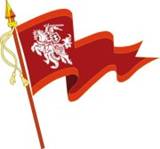
You were to negative. It may have been the family's wishes to keep his body here in Cleveland, since they are still here. However, we do not ever see any of the members of the Smetona family at any Lithuanian functions.
Lith Klubas,
Cleveland, Ohio
- Bookmark :
- Digg
- del.icio.us
- Stumbleupon
- Redit it
Lithuania still has a long way to go until it achieves the same level of independence and self-determination it had under Smetona. That’s why to repatriate the remains of President Smetona and Sofija Smetoniene will not happen soon if at all.
- Posted by - (0) Comment
![]()

Andris Jonas Dunduras
Firstly- Everyone needs to understand the facts about why things are the way they are with the crypt before making baseless statements. Here are the basics:
#1 The crypt remains the property of the Smetona family, and they are very conservative. The decision to repatriate the remains of President Smetona and Sofija Smetoniene are theirs, and nobody else's. From what I've heard, they have declined all offers of such a transfer, and probably aren't even open to dialogue about it. Read on for the reasons..
#2 We must understand that the Smetona regime was a nationalistic (Lithuania first) one, which would be VEHEMENTLY opposed to: A) All elements of communism still present in the Lithuanian government today. These people would have been public enemy #1 during Smetona's rule. B) Lithuania's membership of the European Union is completely contrary to the ideals of Smetona's movement also. C) This is just the tip of the iceberg... we also have terrible poverty, graft, corruption, racketeering by the soviet style nomenclature that still exist in all levels of government (even if in name only), mass exodus and brain-drain by those whose dreams have been shattered by those bloodsuckers, the list goes on... Until the last one of these traitors are gone from power, I think there is ZERO chance the remains will be repatriated, nor would it be appropriate. Take this as a quiet sign that Lithuania still has a long way to go until it achieves the same level of independence and self-determination it had under Smetona.
#3 The crypt is indeed very much visited. You see no flowers on the wall because the family always wanted to avoid it becoming a pilgrimage site, however those wishing to pay quiet respects and a moment of reflection on Lithuania are encouraged to do so. It is that way for a reason. My grandparents and thousands of others who died in exile are buried nearby. No visit is complete without stopping at the mausoleum afterward- I do it, and so do many others.
Most of us in Cleveland's Lithuanian community are aware of these matters relating to the Smetona family crypt, and now you are too. If somebody doesn't know the facts, they should ask, or do a little research instead of proceeding to post meaningless blatherings on their blog.
Thanks for reading, and share with others!
Andris Jonas Dunduras
Cleveland, Ohio, USA
- Bookmark :
- Digg
- del.icio.us
- Stumbleupon
- Redit it
- Posted by - (1) Comment
Brazaitis is no hero
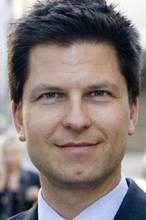
Darius Udrys
Opinion: Darius Udrys
If there’s one thing civilized people should all be able to agree upon, one would think that it would be not to make heroes out of Nazi collaborators. Yet here in Lithuania we are about to witness just such a moral travesty.
Somebody apparently decided it would be a good idea to move the remains of Juozas Ambrazevicius-Brazaitis, acting prime minister of Lithuania during the first months of the Nazi occupation, from the United States to Lithuania. Buried previously in Putnam, Connecticut, he has been exhumed and will be reinterred in Kaunas this Sunday with as much fanfare as can be mustered among the clueless and the callous.
Ambrazevicius-Brazaitis is no hero.
Click HERE to read the article and see more comments
___________________________
Well said Dr. Udrys
Grant Gochin·
Well said Dr. Udrys.
These actions by the Lithuanian Government and religious institutions will stand as a mark of shame on Lithuania for another generation. The commemoration of the facilitator of mass murder is a heinous offense against all civilized people.
___________________________
Thank you, God, that Darius Udrys can speak out at least about this obvious attempt by the Lithuanian government to "double-game" this Nazi collaborator
Geoff Vasil·Thank you, God, that Darius Udrys and the Vilna Gaon Jewish State Museum can speak out at least about this obvious attempt by the Lithuanian government to "double-game" this Nazi collaborator.
As I understood the issue, the Brazaitis family has been pushing for this since forever. Initially it was supposed to be a private ceremony. How the Lithuanian state got mixed up in this, I don't know.
It's a little hard for me, as what I consider myself to be, a rational person, to believe that Brazaitis-Ambrazevicius was somehow a misguided young man who initially believed Nazi promises (following the handover of Memel?) and became disenchanted later and formed an "anti-Nazi resistance." His unelected "government" was formed by Nazi supporters in Berlin. He "hid" in Germany when things got hot in Lithuania. He signed off on the creation of the TDA, Auxiliary Police and the Kaunas concentration camp/ghetto. After the war, writing under a pseudonym, from the safety of occupied West Germany, he cried about "the loss of a people," but not about the Jews he helped murder. He seems to have created organizations on paper but not to have done anything to stop the Nazis. Like so many war criminals, he seems to have become an "anti-Nazi" sometime in late 1945. Maybe Hitler himself was also an "anti-Nazi?" At least Hitler did more to stop the German war machine, subverting it from within and exposing it to Allied attack.
It IS a travesty that this dyed-in-the-wool Lithuanian Nazi is being commemorated by the Lithuanian state and the Catholic Church and the City of Kaunas. If the Kubilius government believes it is alright to commemorate Holocaust perpetrators and that ethnic cleansing is acceptable, someone outside Lithuania ought to set them straight. What a shame.
- Bookmark :
- Digg
- del.icio.us
- Stumbleupon
- Redit it
- Posted by - (0) Comment
A wonderful May visit to:

Text and photos: Aage Myhre
aage.myhre@VilNews.com
The long pier that stretches out into the Baltic Sea is the hallmark of Palanga. It is still relatively spacey now in May, but it will soon become the crowded promenade path for intense summer evenings when the sun sets over the Baltic Sea. It is a real breakwater, struggling against the never-ending waves rolling in towards the sandy coast of Lithuania where the more than fresh breeze often does it very best to blow the sand further inland, but with the high dunes behind the beaches effectively stopping it. It is early summer in Palanga, and I simply love the freshness of the sea water, the breeze and the air that now feels healthier than ever.
In Lithuanian language the pier is called a bridge, and I am thinking that for the long years of Soviet oppression, the Palanga pier may have been like a real bridge for the people of this country, a bridge of imagination on how it would be to walk over to the Swedish shore on the other side - to the freedom and prosperity that for so many years had to be no more than a dream for the Lithuanian people.
Palanga town itself is calm and relatively quiet, perfectly well protected from the wind by the tall bowed pine trees that grow along the coast line. The leaves on the deciduous trees behind are still keeping their fantastic glowing red and yellow colours, even if many of them already have fallen to the ground, preparing to fertilise the soil for a new spring next year.
Spring in Palanga is for me even more attractive than the very summer when the huge crowds of tourists arrive here. Now I can see the beauty of the nature in a far more undisturbed way, and each breath of the wind seems now more soothing and healing.
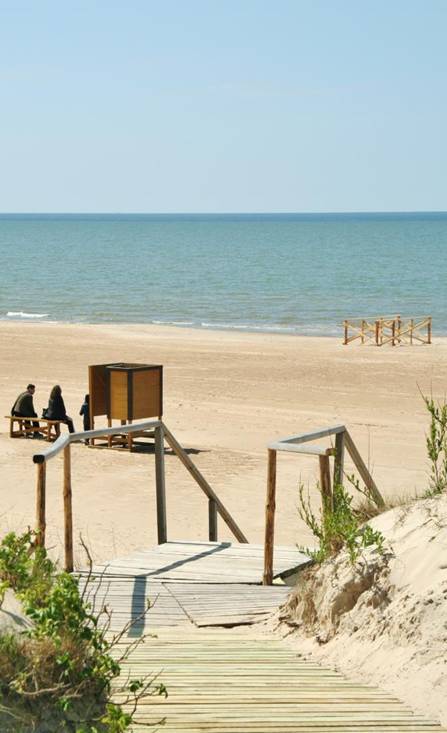
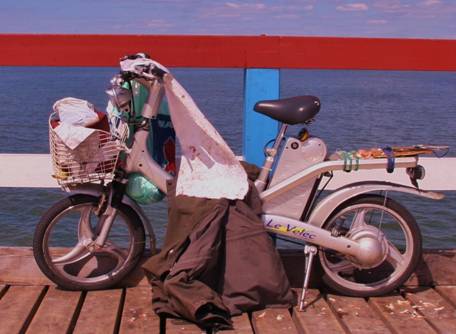
- Bookmark :
- Digg
- del.icio.us
- Stumbleupon
- Redit it
- Posted by - (1) Comment
A wonderful May visit to:

Text and photos: Aage Myhre
aage.myhre@VilNews.com
The long pier that stretches out into the Baltic Sea is the hallmark of Palanga. It is still relatively spacey now in May, but it will soon become the crowded promenade path for intense summer evenings when the sun sets over the Baltic Sea. It is a real breakwater, struggling against the never-ending waves rolling in towards the sandy coast of Lithuania where the more than fresh breeze often does it very best to blow the sand further inland, but with the high dunes behind the beaches effectively stopping it. It is early summer in Palanga, and I simply love the freshness of the sea water, the breeze and the air that now feels healthier than ever.
In Lithuanian language the pier is called a bridge, and I am thinking that for the long years of Soviet oppression, the Palanga pier may have been like a real bridge for the people of this country, a bridge of imagination on how it would be to walk over to the Swedish shore on the other side - to the freedom and prosperity that for so many years had to be no more than a dream for the Lithuanian people.
Palanga town itself is calm and relatively quiet, perfectly well protected from the wind by the tall bowed pine trees that grow along the coast line. The leaves on the deciduous trees behind are still keeping their fantastic glowing red and yellow colours, even if many of them already have fallen to the ground, preparing to fertilise the soil for a new spring next year.
Spring in Palanga is for me even more attractive than the very summer when the huge crowds of tourists arrive here. Now I can see the beauty of the nature in a far more undisturbed way, and each breath of the wind seems now more soothing and healing.
As so many times earlier, I am thinking that Lithuania is the country than cannot be understood until one knows at least something about the enormous changes and upheavals that took place on the soil and shores here over century after century throughout the entire history of the country, or at least until the Soviet lid was closing, hiding the truth about Lithuania to the rest world.
Looking out to the Baltic waves I remember the legendary story about how the fleet of the Danish king Valdemar came to Palanga in 1161, becoming the first known conqueror of these shores. Later more Vikings coveted these lands, followed by 13th and 14th century crusaders, who to a high degree devastated the area and the settlements here. Only after the Grunwald battle in 1410, a peace contract was concluded, stopping the invasion of the Order to Lithuania. In accordance with the peace contract of Brest in 1435 Palanga became Lithuanian.
The following centuries saw a relatively flourishing Palanga where the inhabitants earned for their living by fishing and gathering of amber which was cast ashore from the sea, trading it with other towns of Baltic coast. Baltic Sea traders visiting Palanga exchanged their goods to amber, honey and furs, all going well until neighbouring port towns got jealous and convinced the Swedish fleet to destroy the Palanga and Sventoji ports.
In 1795, the Russian Empire annexed Lithuania, including Palanga, and then, in 1824, a strange business deal took place when a colonel in the Tsar's army, earl Mykolas Tiskevicius, simply bought the complete Palanga. The earl’s later contribution, however, to the development of the town is very apparent. He established the now famous Palanga Park, including an amazing palace; a new port was made, a brick factory was established, a church was built, and the resort with sanatoriums as we know it today was established.
After the First World War, when Lithuania became an independent state again, there was a disagreement with Latvia regarding the territory of Palanga and Sventoji, but the towns eventually became Lithuanian again.
Walking here, down the lively Basanavicius Street, I am also thinking of Jonas Sliupas, father of my friend Vytautas Sliupas. From 1933 to 1940, Jonas Sliupas served as mayor of Palanga. He returned to this office briefly during the Nazi occupation of 1941, until ousted because of his protest against the destruction of Lithuanian and Jewish lives. How different must not the emotions of those days have been compared to today’s relaxed atmosphere in freedom.
After the storms of two wars, and a 20-year period of freedom in between, in 1944-45, Soviet army occupied Lithuania and Soviet authority was set in also in Palanga. The result was that private villas were nationalized, and instead of them state sanatoriums and relaxation houses were established. In 1952, when Palanga was qualified in Republic subordination, a new project layout of the resort was composed. The relaxation and treatment base of resort was adapted for working all year round, and Palanga became one of the most popular resorts and health centres on the Baltic coast.
In 1991 the Palanga resort opened a new page of history. Nationalized buildings and land were returned to their just owners, the relaxation houses and hotels became private, and people started building modern private villas, detached houses, hotels and restaurants. Every year since, Palanga has gained great popularity as a summer hot-spot.
I am here when the summer season has not yet started, but I am happy to see that there is an increasing popularity for Palanga also at this time of the year. In the hotel lobby I read that a well-known company with headquarter in Vilnius is having a seminar in the hotel’s conference room, on the pedestrian paths through the forests I see many on foot and bicycles, many are still enjoying the sunrays on the park benches after having fed the swans, and there is still teeming life and laughter in Basaniviaus Street every evening.
To visit Palanga, any time of the year, is a healthy and fun experience, truly worth a try!






























Palanga restaurants











The fantastic Palanga beach







Fishing at the Palanga pier





The Palanga Park
This landscaped garden is one of the prettiest, best-preserved, and best-kept parks in Lithuania's coastal region. In 1987 Count Felix Tiskevicius founded this park around the palace built the same year. The park was designed by the famous French landscape architect and botanist Eduard Fransua Andr‚ (1840-1911), who spent three summers in Palanga with his son Ren Eduard Andr (1867-1942) supervising the park's construction. They were assisted by the Belgian gardener Buyssen de Coulon.
Andr's talent and the natural and historical uniqueness of the park's setting successfully blended to create a piece of art.
The scenic park offers a variety of views and moods. The palace is set between a pond and the legendary hill of Birute - an ancient Lithuanian sacred place - that offers a glorious view of the sea. The natural foundation of the park, both in earlier times and now, are relicts of ancient pine forests. Little paths and squares with beautiful flower arrangements are laid out skillfully among the trees.
The contrast of scenery is emphasized by the palace's regular shape: the north side opens onto a magnificent terrace and steps leading into the park. Flowers and a fountain complete the effect. The south side of the palace is surrounded by an oval rose garden that is connected to the palace's terraces by stairs.
Experts guess that the park's founders planted about 500 different kinds of trees and bushes. Trees were brought to Palanga from Berlin, Karaliaucius and other European botanical gardens. Today - as before - pine trees dominate the park. Firs and dark alders grow in the more humid areas. About 250 imported and 370 native plant species are represented. 24 of these are included in Lithuania's list of endangered species (1992 data).
The park has survived two world wars and a number of natural disasters. It has also been extended and restored. However, with the exception of a few details, the park has kept the atmosphere created by Andr, as Florence Andr Kappelin, the head of the E. Andr association, confirmed during her visit to Palanga in 1996.













- Bookmark :
- Digg
- del.icio.us
- Stumbleupon
- Redit it
![]()

One litas coin dedicated to basketball won the award of the most beautiful circulation coin in the Mint Directors Conference, which takes place every two years, the Bank of Lithuania said.
During the XXVII Conference, which took place in Vienna this year, the coins minted in 2011 and 2012 were evaluated. They competed for the nomination of the Most Beautiful coin and the Most Technologically Advanced coin in the categories of commemorative gold coin, other commemorative coin and circulation coin. The Lithuanian coin received an international award for a perfect expression of the theme, simplicity and clarity of the visual expression.
"Commemorative coins of the Bank of Lithuania frequently become winners of various international competitions, however, a circulation coin was awarded for the first time," said Audrius Misevicius, Member of the Board of the Bank of Lithuania, Chairman of the Currency Design and Production Commission.
- Bookmark :
- Digg
- del.icio.us
- Stumbleupon
- Redit it
Juozas Ambrazevicius – Brazaitis is no hero
- Posted by - (0) Comment
 Darius Udrys |
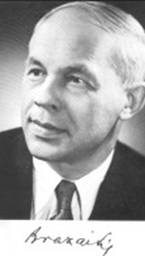 |
Opinion: Darius Udrys
If there’s one thing civilized people should all be able to agree upon, one would think that it would be not to make heroes out of Nazi collaborators. Yet here in Lithuania we are about to witness just such a moral travesty.
Somebody apparently decided it would be a good idea to move the remains of Juozas Ambrazevicius-Brazaitis, acting prime minister of Lithuania during the first months of the Nazi occupation, from the United States to Lithuania. Buried previously in Putnam, Connecticut, he has been exhumed and will be reinterred in Kaunas this Sunday with as much fanfare as can be mustered among the clueless and the callous.
Ambrazevicius-Brazaitis is no hero.
- Bookmark :
- Digg
- del.icio.us
- Stumbleupon
- Redit it
- Posted by - (22) Comment
Juozas Ambrazevicius -
Brazaitis is no hero
 Darius Udrys |
 |
Opinion: Darius Udrys
If there’s one thing civilized people should all be able to agree upon, one would think that it would be not to make heroes out of Nazi collaborators. Yet here in Lithuania we are about to witness just such a moral travesty.
Somebody apparently decided it would be a good idea to move the remains of Juozas Ambrazevicius-Brazaitis, acting prime minister of Lithuania during the first months of the Nazi occupation, from the United States to Lithuania. Buried previously in Putnam, Connecticut, he has been exhumed and will be reinterred in Kaunas this Sunday with as much fanfare as can be mustered among the clueless and the callous.
Ambrazevicius-Brazaitis is no hero. As prime minister he took responsibility over the short-lived Provisional Government that sprang up in 1941 as the Germans pushed the Soviets out of Lithuania. That government was formed by an organization in collusion with German authorities from the start—the infamous Lithuanian Activist Front (LAF).
The LAF hoped to take advantage of the German advance to restore some semblance of Lithuanian independence and, as stated in one of its publications, “carry out an immediate and fundamental purging of the Lithuanian nation and its land of Jews.” Lithuania’s own International Commission for the Evaluation of the Crimes of the Nazi and Soviet Occupation Regimes in Lithuania puts it plainly: "The anti-Semitic views of the Provisional Government and the Lithuanian Activist Front are well-documented.”
The Provisional Government (PG) was populated with officials who sympathized with the Nazi worldview. Historian Saulius Suziedelis notes in particular its “public alignment with the Reich” and “its fawning rhetoric of gratitude to Hitler and ‘Greater Germany’.” Even worse: according to Suziedelis, newly discovered protocols of PG cabinet meetings make plain that “while it had no plan to kill the Jews en masse, it was ready to enact anti-Jewish economic measures modeled on the Third Reich's infamous Nuremberg Laws of the 1930s.”
Those Lithuanians who glorify the PG and the anti-Soviet uprising that spawned it go to great lengths to downplay its association with the Nazis. This contributes to a general lack of understanding among ordinary Lithuanians of what went on during that period and who was responsible.
When pressed, PG apologists excuse the Ambrazevicius-Brazaitis government by claiming that it only collaborated with the Nazis pragmatically and for noble reasons (to restore Lithuania’s sovereignty), that not every member of the LAF sympathized with the hard-line views of the Berlin leadership, that the PG “self-disbanded” as soon as it realized it would be no more than a Nazi puppet, and, anyway, there was nothing the PG could have done to prevent the Holocaust. Some have gone so far as to suggest that when the LAF instructed Jews to “get out of Lithuania,” perhaps it was simply warning them to take measures to protect themselves. Needless to say, this flies in the face of copious evidence in the LAF’s own words that its aims were far more sinister.
Whatever the moral casuistry, the bottom line is that there is no reasonable way to decouple the Ambrazevicius-Brazaitis government from the words and deeds of the LAF and the Nazis. The Ambrazevicius-Brazaitis government never publicly distanced itself from the killings of Lithuania’s Jewish citizens and signed off on orders approving their dispossession, isolation, and other measures that facilitated the Holocaust.
All of this notwithstanding, and for reasons impossible to comprehend, the Government of Lithuania as well as the Mayor of Kaunas Andrius Kupcinskas and Archbishop of Kaunas Sigitas Tamkevicius have lent their support to this week’s ill-conceived commemoration of Ambrazevicius-Brazaitis’s legacy. The Government provided 30,000 Litas or about $11,000 in funding for the reburial and the Mayor is head of the organizational committee. Archbishop Tamkevicius had particularly warm words for Ambrazevicius-Brazaitis, who will be reinterred in a place of honor at the Church of the Resurrection of Christ—this from the same ecclesiastical leadership that refused former Lithuanian prime minister Algirdas Brazauskas a Catholic burial because, according to Archbishop Tamkevicius, he showed no remorse for his communist past.
This is not only deeply hurtful and offensive to the families and the memory of the victims of the Holocaust, many of which were rounded up and murdered by LAF activists. To allow this travesty to proceed gravely compromises our country morally and confirms the already widespread perception that Lithuania is unwilling to face its own history honestly and sincerely.
Whether or not one holds Ambrazevicius-Brazaitis responsible for what was perpetrated under his Provisional Government, it does no one a service to hold up as a hero a man who utterly failed the test of a good leader: standing up for what is right and for the innocent.
Someone should have had the wisdom and the courage to say no to the request for public funding and support for this reburial when it was first made. The Government, Mayor of Kaunas and the Catholic Church should cancel and publicly distance themselves from any events resembling a commemoration of Ambrazevicius-Brazaitis’s legacy.
- Bookmark :
- Digg
- del.icio.us
- Stumbleupon
- Redit it
- Posted by - (0) Comment
Member of Parliament Petras Gražulis:
Let’s chase ambassadors
and gays out of Lithuania
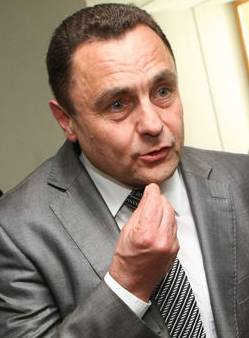
Juliaus Kalinsko
„15 minučių“ photo / Petras Gražulis
By: Eglė Digrytė / ![]() / 15min.lt
/ 15min.lt
Lithuanian MP Petras Gražulis, who has earned notoriety for his homophobic statements and a police record for his behavior during a Gay Pride event in Vilnius in 2010, has made another stunt right in the Parliament building.
On Wednesday, Gražulis turned up at a press conference – attended by LGBT rights advocates and foreign ambassadors – and burst out with comments on necrophiliacs and zoophiles, insults at foreign ambassadors, and declarations that all gay people should leave the country.
The press conference was held on the eve of the International Day Against Homophobia and Transphobia (IDAHO). It was organized by Marija Aušrinė Pavilionienė, social democratic MP, and Lithuanian Gay League (LGL), LGBT-rights NGO. It was attended, among others, by Dutch ambassador Kornel Willem Spaans, US Embassy Policy and Economics Department head John Finkbeiner, Amnesty International representative Helle Jacobsen.
- Bookmark :
- Digg
- del.icio.us
- Stumbleupon
- Redit it
Look to Norway!
- Posted by - (0) Comment
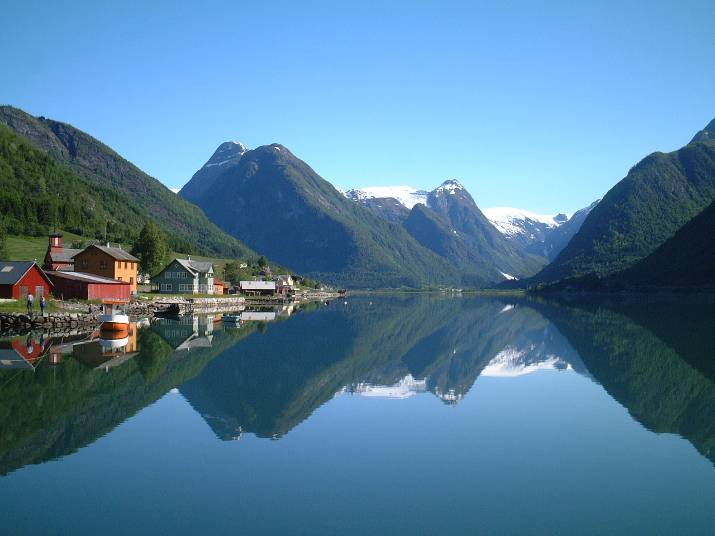
Text: Aage Myhre, Editor-in-Chief
When I came to Lithuania for the first time from my native Norway, more than 20 years ago, this country's political leadership was in the process of drafting the new law book that would be the legal framework for the modern democracy this country was supposed to become after all the years of Soviet occupation. Our small delegation from Norway suggested that one simply could translate our Norwegian legislation, of a free and functioning democracy, but Lithuania's politicians chose not to follow our advice, and used instead many years to develop their own laws. This country's leaders have, for better or worse, an extensive belief in their excellence and ability to reinvent the wheel even when it would have been so much easier to seek advice and help from good neighbours.
Many Norwegian delegations have appeared over the 20 years that have elapsed since that time. They have come and gone without seeing the relationship between Norway and Lithuania thus has become particularly warm or close. In several instances, I know that the Norwegians have travelled back home, headshaking.
Fortunately, has there in 2010 and 2011 been opened new doors, and I feel now much more optimistic regarding bilateral cooperation between my two home countries.
It's for Lithuania now time more than ever to seek closer cooperation with Norway, in many areas, and I encourage President Dalia Grybauskaite and Prime Minister Kubilius to follow up the successes of the latest two years.
Norway is one of the world's richest countries, and also a neighbouring country that in many fields can both understand and help to find solutions to the many challenges still facing Lithuania. I sincerely hope that Lithuania now seizes the opportunity to develop a systematic structure for a very close cooperation with my home country.
The time of emergency measures connected to the crisis and depression are over. Now we need pragmatic, bilateral action.
A good and close cooperation must naturally involve benefits to both parties, and I can imagine many areas where that may be possible. Let me mention a few:
ENERGY
Norway is an energy nation of world format; in oil, hydropower, wind power, solar energy and energy efficiency. Lithuania is in the process of developing their own systems and structures, but could move infinitely faster forward by collaborating with Norwegian companies and institutions.
INDUSTRY
I see it as likely that many Norwegian companies could outsource much of their production to Lithuania. What we need is a skilled professional, who knows Lithuania’s opportunities in manufacturing, who can travel around Norway to discuss possible cooperation projects with Lithuanian companies.
SHIPPING / OFFSHORE
Norwegian companies are increasingly active in Klaipeda port. New ships are being built, others restored, every day, very often with Norwegian principals. An area that can been expanded to a considerable extent and scope.
AGRICULTURE
In the interwar years Denmark and Lithuania competed to be leaders in northern European agriculture. Today, agriculture in countries like Denmark and Norway at a very high level, whereas Lithuania desperately needs new investment and new technology. A collaboration with Norwegian farmers and agricultural organizations could come to mean endlessly much in this process.
FISHERIES
A Norwegian friend of mine is the director of a fish factory in Klaipeda. The owner is the Bornholm company Espersen.
The factory was built new in Klaipeda's Free Economic Zone a few years ago. Now an extension of the factory is underway. This is an excellent example of how Lithuanian labour can do a good job for a company that processes fish for European markets.
TOURISM, COURSES AND CONFERENCES
I am convinced that Lithuania would attract many more Norwegian tourists if they had a person or a group of professional sales people that toured throughout Norway with presentations of what Lithuania has to offer. Not least, this applies to the training and conference sector, which is incredibly large in Norway. Lithuania should clearly be able to come up with very attractive and competitive offers.
Another example: The former Reval Hotels (now operated by Radisson BLU) in Lithuania are Norwegian-owned, and a close collaboration with the owner, the Linstow group, should be investigated further.
SCHOOLS
The Lithuanian school system desperately needs improvement, and collaboration, school-to-school, with Norway, would undoubtedly be useful. I got an excellent example of how useful such cooperation can be when a few years ago I visited the headmaster at the Birštonas Secondary School, Alvydas Urbanavičius. This school, having 800 students, is famous throughout Lithuania for its high level of education. When I asked the headmaster about the reason for this his reply was cards and cash, "We were very lucky to be 'adopted' by a Danish school already in the early 1990s, and the Danes taught us how to run a modern school and also gave us important funding so that we could avoid many of the problems that other Lithuanian schools and the very educational system here is still fighting with."
In terms of higher education, Norway is otherwise heavily involved in Lithuania already. The ISM Universities (University of Management and Economics) in Kaunas and Vilnius, for example, are owned by Norwegian BI (Norwegian School of Management).
But there is much that can be further developed in many levels and learning areas.
HEALTH CARE
A very large number of Lithuanian physicians and other health professionals are today working in Norway. Maybe there could be an idea if one instead tried to find forms of cooperation between Norwegian and Lithuanian health care so that this country would not be completely drained for health professionals for the benefit of rich Norway? Norway has a very important task to fulfil in this aspect, and it should be imposed on Norwegian health policy makers to take this issue far more seriously.
CULTURE, SOCIETY
Lithuania has a wonderful culture that should be experienced by a large number of Norwegians. An extensive cooperation between the cultural sectors of our two countries would mean microns for both parties. As an architect, there is much on my heart to find help to preserve the great Lithuanian wooden houses and other old architecture, and I hope the right institutions in Norway would be ready to help…
During my visit to Lithuania in January 1991, while the Soviet troops surrounded the Parliament and the TV tower in Vilnius, our Norwegian delegation brought with us a letter from Oslo's mayor confirming that Oslo was ready to be Vilnius' first sister city in the west. Later, many Lithuanian and Norwegian cities, municipalities and counties have established friendship agreements. But in most cases only with words, little action.
Now is the time for action. President Grybauskaite’s state visit last year was a good step forward, and I hope PM Kubilius and his government now realise that Norway is a land of opportunity – also as Lithuania's closest friend and ally. A comprehensive and professionally planned cooperation structure on many levels should be prepared.
We have no time to lose.
- Bookmark :
- Digg
- del.icio.us
- Stumbleupon
- Redit it
Global financial meltdown? Not in Norway
- Posted by - (0) Comment
![]()
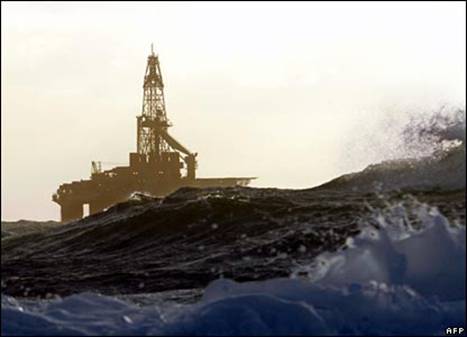
One European nation escaped the worldwide financial meltdown and recession more or less unaffected. That was Norway, a country which saved its money - rather than spent it - through the boom years. As a result of frugal financial management, Norwegian housing prices and consumption have been on the upswing and interest rates affordable also during the deepest global crisis the latest years. Norway’s fiscal responsibility of its income from enormous oil and gas reserves has allowed the nation to build one of the globe’s largest investment funds.
After large deposits of gas and oil were discovered in the 1970s, Norway didn’t go on a spending spree, and channelled its revenues into a state investment fund (The Government Pension Fund). As of the valuation in June 2007, it was the largest pension fund in Europe and the fourth largest in the world. As of 31 December 2010 its total value is NOK 3,077 billion ($525 billion), holding 1 per cent of global equity markets. With 1.78 per cent of European stocks, it is said to be the largest stock owner in Europe. The government - with very few exceptions - can spend only four percent of those revenues annually.
Beyond its oil and gas revenues, strict banking regulations - tightened after a banking crisis in the early 1990s - shielded Norway from the credit crisis. Norwegian banks made loans wisely and stayed away from exotic investments and financial products over the past decade. “They (the United States) got all the bright guys to make all kinds of fantastic products. Very creative. And it turned out it was maybe not the best solution in the end,” Mr. Amund Utne, a director of Norway’s Finance Ministry, said, with typical Norwegian understatement. “I think Norwegian banks are not as creative. In this situation, it may be good to be somewhat boring.”
Norwegian unemployment rate remains stable, around 3,0%.
Norway has also been immune to the housing bubble. Housing prices are up. Consumption is up. Banks are lending normally to the household sector and interest rates are staying low.
- Bookmark :
- Digg
- del.icio.us
- Stumbleupon
- Redit it
- Posted by - (1) Comment
Riot police helped a mother regain custody of her 8-year-old daughter this morning
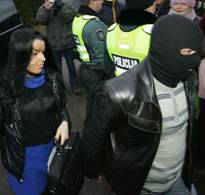
Thirty-nine protesters were detained as they tried to prevent the police from carrying out a 5-month-old court order saying the mother should regain custody of her daughter from a house where relatives were keeping her.
Many Lithuanians in the southern town of Garliava violently opposed the order because they allege the girl’s mother, Laimute Stankunaite, is part of a pedophile ring.
Protesters had long prevented authorities from taking the girl…
Read more...
- Bookmark :
- Digg
- del.icio.us
- Stumbleupon
- Redit it
Because the Soviets were allies of the United States during the war, the nasty chapter of Russia’s occupation of Lithuania is not well-known in the USA
- Posted by - (0) Comment
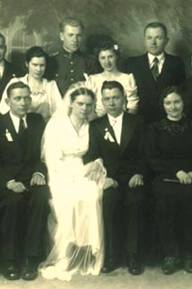
By Daiva Simonis Miller
My parents, Marija and Jonas Simonis, were married Feb. 3,1940, just before the Russians invaded and occupied Lithuania during World War II.
Because the Soviets were allies of the United States during the war, this nasty chapter of history is not well-known in the USA. The extent of Soviet war crimes and the suffering of the victims have only been revealed to the west since the fall of the USSR in the early 1990s, but those who lived in occupied countries during those times learned to live in fear, as their lives were on the line.
When the Soviet army rolled into Alytus, Lithuania, in June of 1940, Marija and Jonas quickly moved their few belongings from their apartment into Marija’s parents’ home to prevent the Soviets from quartering soldiers there.
Read more…
- Bookmark :
- Digg
- del.icio.us
- Stumbleupon
- Redit it
VilNews e-magazine is published in Vilnius, Lithuania. Editor-in-Chief: Mr. Aage Myhre. Inquires to the editors: editor@VilNews.com.
Code of Ethics: See Section 2 – about VilNews. VilNews is not responsible for content on external links/web pages.
HOW TO ADVERTISE IN VILNEWS.
All content is copyrighted © 2011. UAB ‘VilNews’.

 Click on the buttons to open and read each of VilNews' 18 sub-sections
Click on the buttons to open and read each of VilNews' 18 sub-sections 






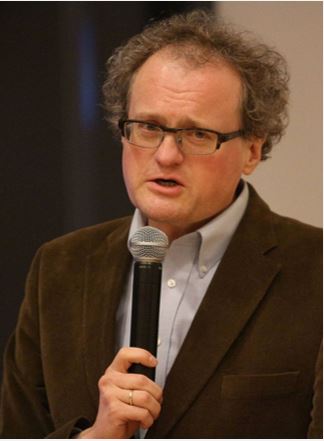
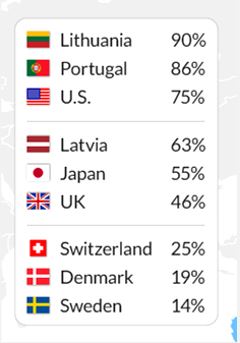
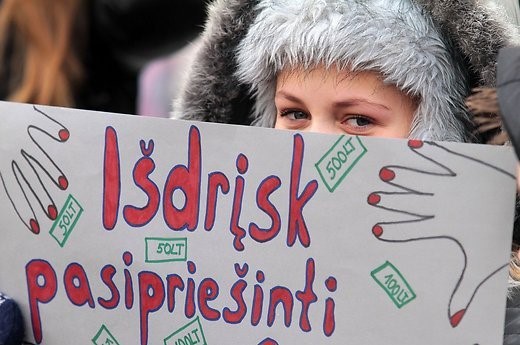


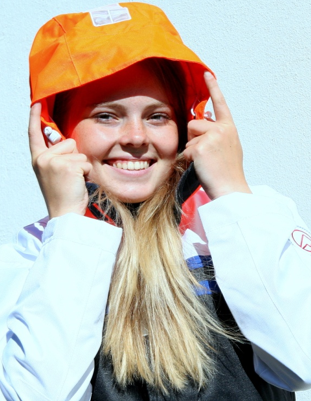
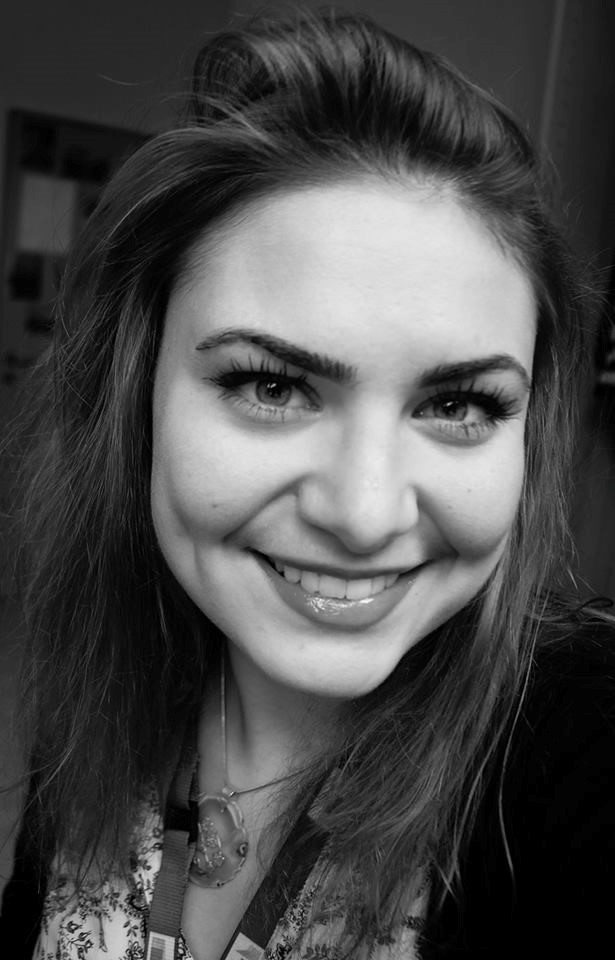
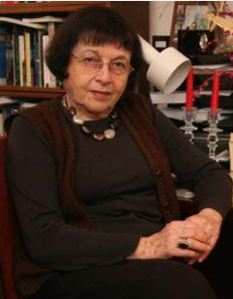
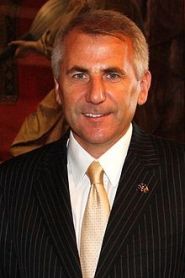
.jpg)
